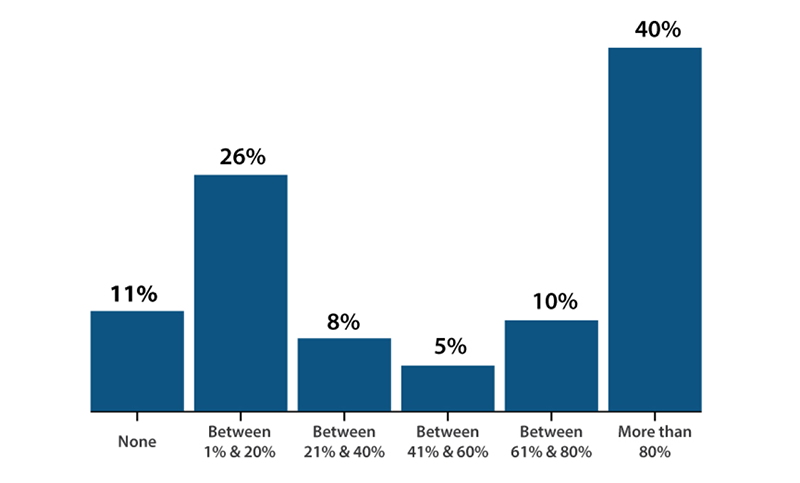SD WAN Pros and Cons: Which Deployment is Right for You?

How many branches does your company have? Maybe it’s a handful, or maybe it’s dozens of offices around the world. No matter what the answer is, chances are at least some of your users’ internet traffic is routed to a central data center before being passed onto the Internet.
This practice, also known as backhauling, is commonplace across the industry and has been going on for more than a decade. How much it happens varies, as our survey recently found:

Backhauled Traffic
The overwhelming majority of respondents said that they backhaul at least 80 percent of their data and application traffic, which adds both time and money to the equation. If you fall into that “more than 80%” category, you can take solace in know that you’re not the only one out there who can’t seem to move beyond a practice that’s becoming rapidly outdated in today’s marketplace.
The other piece of this equation is that, in traditional enterprise networks, hardware like switches and routers are based on dedicated Application Specific Integrated Circuits (ASICs). Each of these ASICs is configured individually by the provider, so any changes that need to be made often take a long time to occur.
SD WAN is gradually emerging as an alternative in this area and marks the beginning of a shift away from this older way of doing things. For many companies, it is a giant leap forward in network infrastructure.
SD WAN Advantages
Broadly speaking, SD WANs offer an entirely new way of managing a network across multiple locations. They are not dependent on hardware and can dynamically load balance across multiple links to avoid the backhauling that still plagues many traditional networks today.
This functionality allows organizations to replace MPLS with an Internet-based option that can save money and increase employee productivity. If that sounds too good to be true, it’s not. Here’s a breakdown of how the process works:
- Network control is centralized in a device known as an SDN controller
- The SDN controller implements policy management
- Those tasks, such as configuration and provisioning, are automated
- Multiple WAN links in an active-active configuration are supported
- WAN optimization may or may not be supported
SD WAN Disadvantages
As great as all of that functionality sounds, nothing is perfect, and there are some disadvantages associated with SD WANs. In most cases, they only provide an advantage when accessing cloud-based applications. They do not provide any on-site security functionality.
In addition, SD WANs are mostly a DIY operation — meaning that your IT department is responsible for planning, design, implementation, and maintenance. This means it’s essential to have staff who can build and maintain this solution. Otherwise, you could be looking a hefty price tag for bringing in outside support if something goes wrong.
SD WANs are not completely immune from slow performance, either. It’s easier to connect to the cloud, but there’s still the possibility of jitter and packet loss once you’re there. This is one area where you’ll need to carefully weigh the benefits and drawbacks, especially if you are part of a digital business.
SD-WAN Pros vs Cons
In determining whether or not to implement an SD WAN for your organization, you need to consider where your employees are located and what their needs are. Do they work mostly in the cloud, or do they need to access on-site data? Does your company have the resources necessary to build and maintain an SD WAN?
You’ve seen, the benefits of an SD WAN can be great, but only if you have the needs and the resources to support one. Our white paper on MPLS alternatives delves deeper into this topic to give you a better understanding of whether SD WAN is right for you.
For further reading check out our whitepaper on why enterprise WANs are critical to the successful migration of unified communications and contact center applications to the cloud.
- Accelerate CAD/CAM Performance
- Improve Zoom Conferencing Performance
- Calypso Embraces a SaaS-first Strategy
- CallisonRTKL Transforms their WAN
- Kleinfelder Improves Application Performance
- Teradyne Transforms their WAN
- SAP web application performance
- Kleinfelder Improves Application Performance
- Industrial Manufacturing Company Transforms WAN









